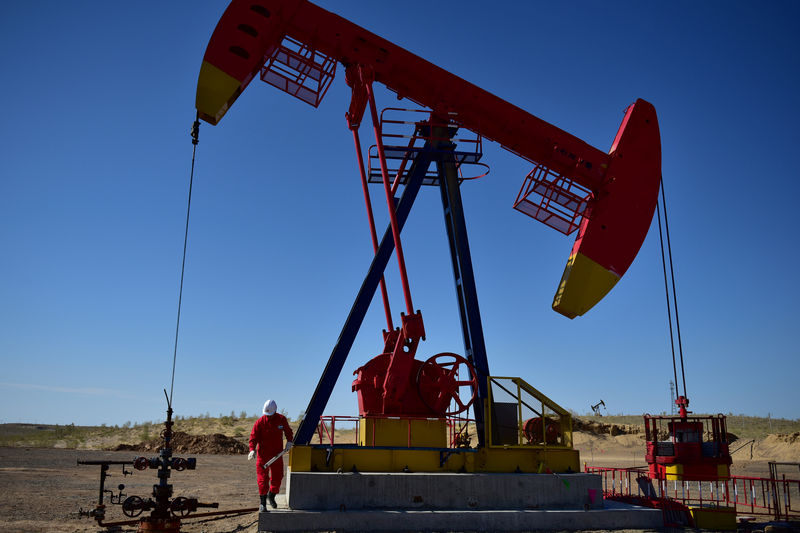 © Reuters. FILE PHOTO: Worker inspects a pump jack at an oil field in Tacheng, Xinjiang
© Reuters. FILE PHOTO: Worker inspects a pump jack at an oil field in Tacheng, XinjiangTOKYO (Reuters) – Oil prices fell on Wednesday after industry data showed U.S. stockpiles of crude unexpectedly rose, starting the new month in negative territory after the largest monthly decline in two years in July.
October futures dropped 29 cents, or 0.4 percent, to $73.92 a barrel by 0044 GMT, adding to a 1.8 percent loss in the previous session.
futures were down 44 cents, or 0.6 percent, at $68.32 a barrel, having dropped nearly 2 percent on Tuesday.
Brent fell more than 6 percent in July, while U.S. crude futures slumped about 7 percent, the biggest monthly decline for both benchmarks since July 2016.
Data from the American Petroleum Institute showed domestic crude inventories rose by 5.6 million barrels last week. A Reuters poll had forecast a fall of 2.8 million barrels. [API/S]
Official data from the U.S. Energy Information Administration is due later on Wednesday. [EIA/S]
Signs that a supply disruption in the Bab al-Mandeb Strait in the Red Sea could be resolved also weighed on prices.
Yemen’s Houthi group said it was ready to unilaterally halt attacks in the Red Sea to support peace efforts. Saudi Arabia suspended oil shipments through the strait last week after the Houthis attacked two Saudi oil tankers.
A Reuters poll showed that oil prices are likely to hold fairly steady this year and next as increased output from OPEC and the United States meets growing demand led by Asia and helps to offset supply disruptions. [O/POLL]
OPEC has pledged to offset the loss of supply from Iran, the group’s third-biggest producer.
Looming U.S. sanctions have already started to cut Iranian exports, with buyers from its biggest customers in Asia cutting imports to a seven-month low in June.
Fusion Media or anyone involved with Fusion Media will not accept any liability for loss or damage as a result of reliance on the information including data, quotes, charts and buy/sell signals contained within this website. Please be fully informed regarding the risks and costs associated with trading the financial markets, it is one of the riskiest investment forms possible.
Source: Investing.com



























